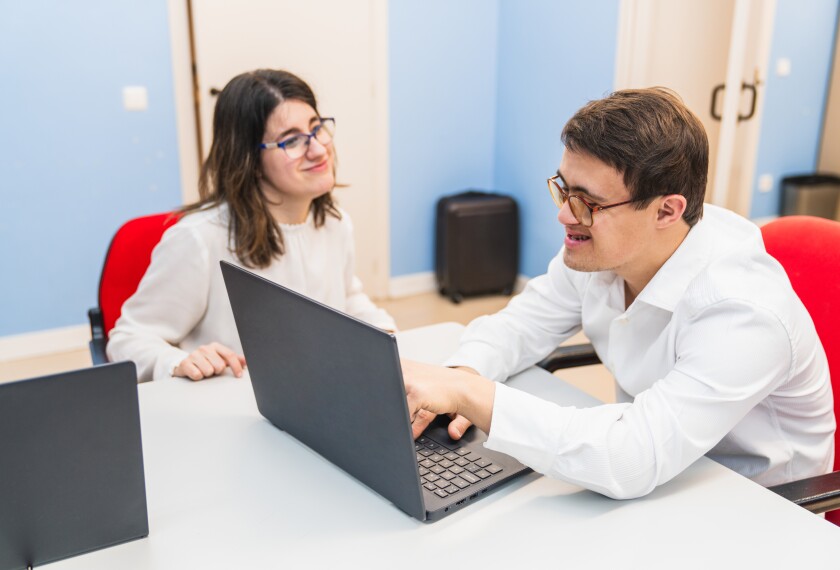School districts in most states have a responsibility under federal law to provide services to students with disabilities until they’re 21 or 22. But carrying out those responsibilities isn’t always intuitive.
Special education services often cost orders of magnitude more than what schools spend to educate students without disabilities. To make those investments, districts often have to dip into local funds when states and the federal government don’t contribute enough.
Staffing is also a pressing concern. Virtually every state has a shortage of educators who teach students with disabilities. And special education teachers in school buildings are often recruited to cover for classroom teachers or instructional aides when they’re absent or when positions are vacant.
Perhaps the most fundamental challenge, though, is what constitutes a “free, appropriate public education” given that disabilities rarely look the same from one student to the next.
Many parents don’t realize that their children with individualized education programs, or IEPs, are entitled to special education services subsidized by the school district even in their early years of legal adulthood, at a time when they might be on a waitlist for state services. District leaders, at their most helpful, can connect vulnerable students to services that improve their lives.
Here’s what experts say schools should be doing to meet these obligations and help students to the best of their ability.
Meet with students as early as age 14 to start transition plans
Schools shouldn’t wait until 11th grade to start helping students prepare for a future beyond high school. Those discussions must begin, according to federal law, by age 16. But starting earlier is better, said Audrey Trainor, a professor of special education at New York University who studies the transition from childhood to adulthood for people with disabilities.
The fundamental question as transition work begins, Trainor said, is: “Is the student going to graduate with their peers at age 18? Or do they need more time in school before transitioning to whatever’s next?”
Oftentimes these early meetings are parents’ first introduction to the idea that their student might remain in high school after their same-age peers have graduated.
Be prepared to negotiate with parents over what’s feasible and appropriate to offer
There isn’t a single correct path for a student with disabilities, even if a school has served other students with similar disabilities before.
As a result, schools should be ready to evaluate requests from parents for particular services, such as sending a student to a private provider or ensuring that a student has extensive one-on-one time with an educator throughout the day. Educators can weigh such factors as cost, evidence of effectiveness, and their own knowledge of a student’s ability to handle different types of services.
“A parent might ask for an accommodation, the school might come back and say, ‘We don’t see that that accommodation is necessary. Let’s try this other accommodation first,’” Trainor said.
Inform students of their rights
Once a child turns 18, they have a legal right to decide for themselves whether they want to remain in special education services.
“Sometimes IEP teams don’t necessarily inform students who are turning 18 that they have that right,” Trainor said. “And it also can be an uncomfortable conversation with parents whose children have disabilities.”
Students with disabilities may not feel empowered to decide for themselves on the best course of action. And some parents may disagree with their child’s assessment of what their next step should be.
Schools should be prepared to navigate these conflicts and conduct conversations sensitively, Trainor said.
Let parents know when opportunities outside the school system arise
The school’s job isn’t solely to provide adult students with services within the school building or through an out-of-district provider. Educators are also tasked with connecting students to services that get them out of the classroom, or out of the school district environment altogether, if that’s the most appropriate environment for the student.
One of the major opportunities comes through vocational rehabilitation services, typically provided by cities and states. Adults who take advantage of those services work with a counselor to develop an “Individualized Plan for Employment"—comparable to an IEP, but geared toward helping them identify job possibilities, career goals, and necessary workplace accommodations.
Vocational rehab helps with some of the basics of venturing into the professional world, like practicing for interviews and polishing resumes. But it can also include mental health counseling and physical therapy.
One key difference between school and vocational rehab, though, is that children and young adults with disabilities are legally entitled to school, whereas adults with disabilities don’t automatically qualify for vocational rehab. They have to apply and be deemed eligible for the service.
Many states have substantial waitlists for these and comparable services. In Illinois, school district administrators who work in special education often feel like the adult services the state provides aren’t sufficient, said Melissa Taylor, executive director of the Illinois Alliance of Administrators of Special Education.
“We do always advise parents that if an opportunity for an adult services-type placement opens up, even if it’s within that time when kids are still eligible for our programs, they should think seriously about taking it,” Taylor said.







